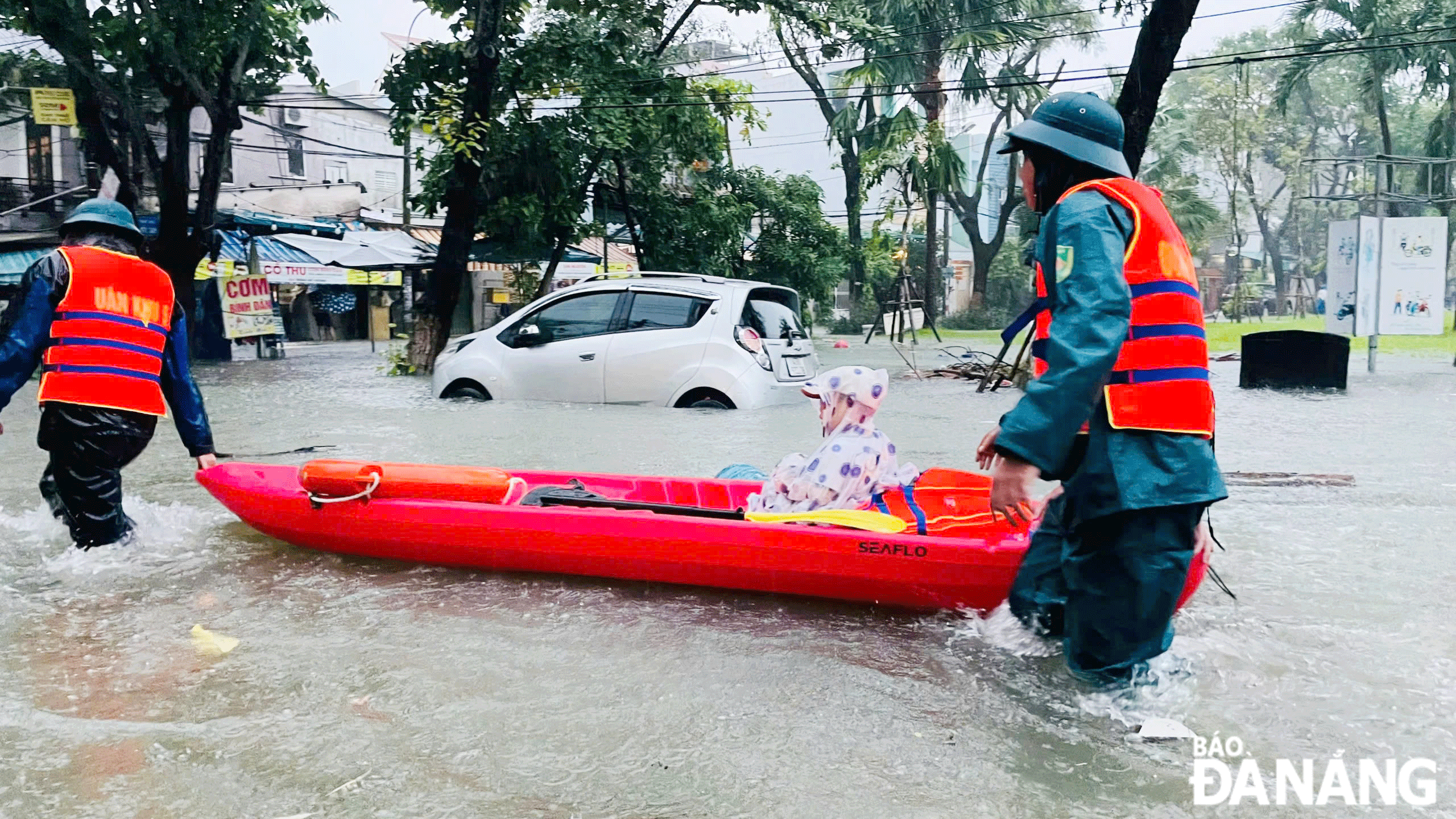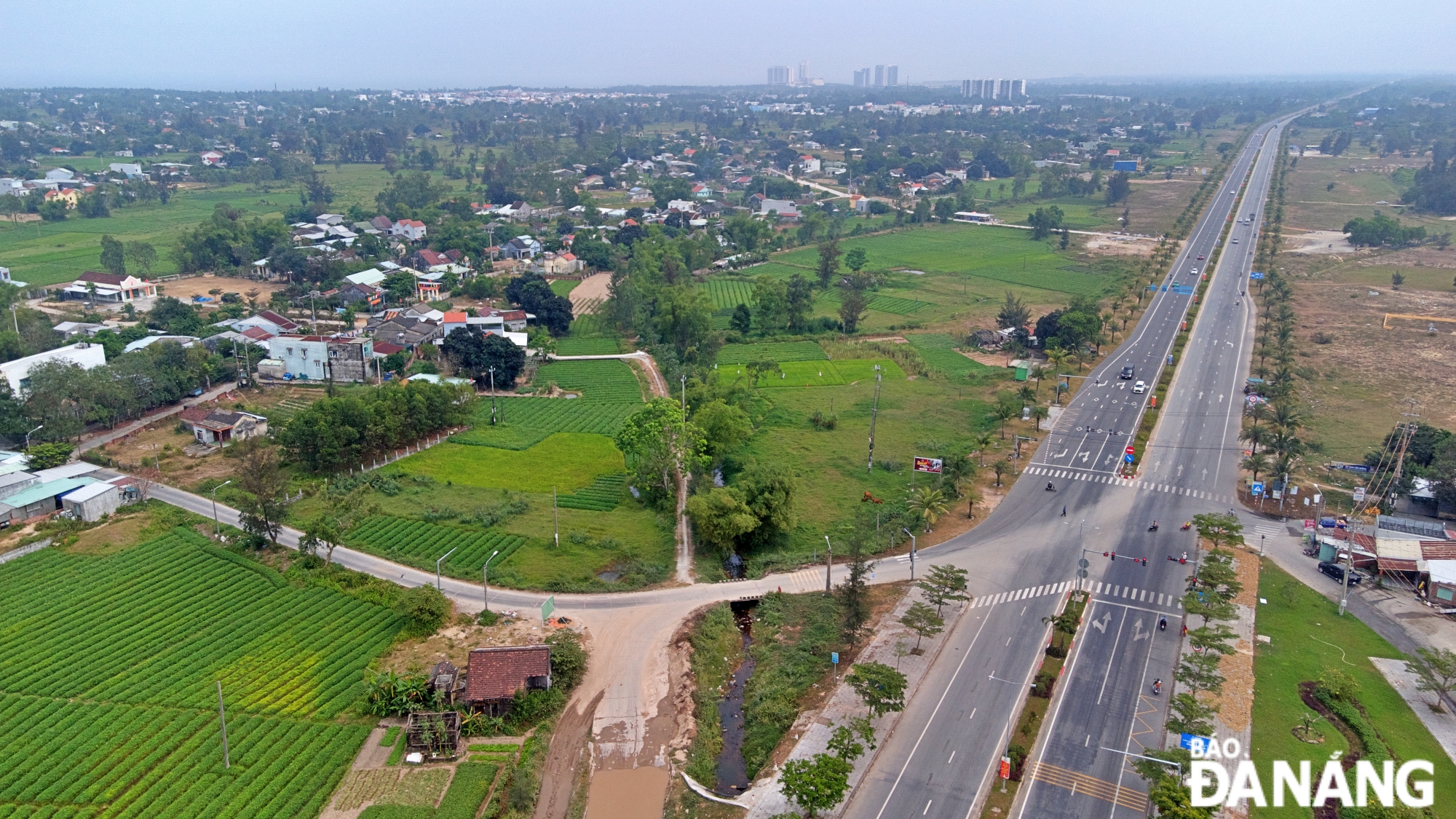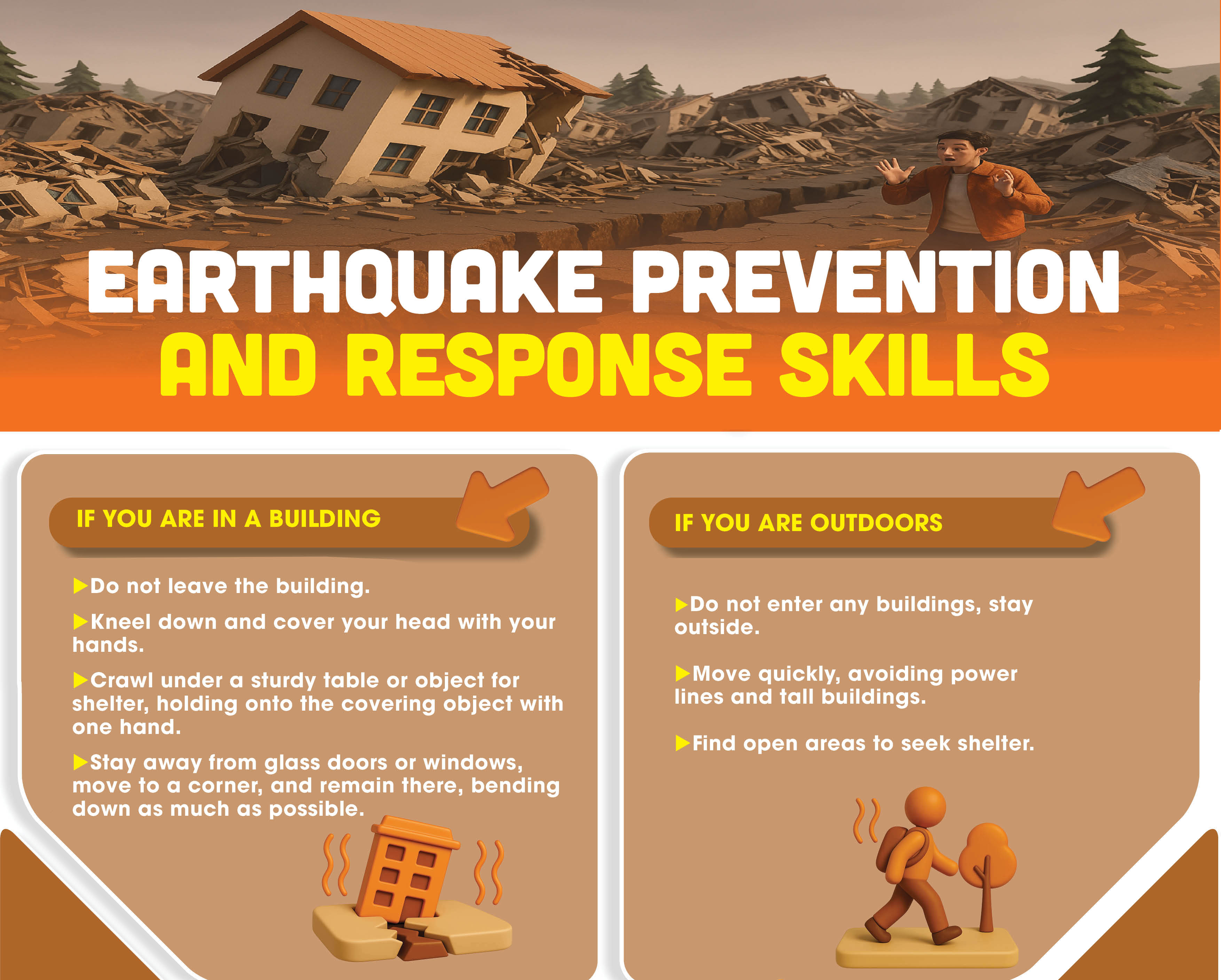Da Nang's proactive moves in response to multiple disasters with high intensity
In recent years, there has been a tendency for multiple disasters which have occurred during and after a storm or tropical depression such as thunderstorms, tornadoes, heavy rain, landslides, floods, and flash floods. Therefore, Da Nang has prepared a number of plans to respond to multiple disasters with high intensity.
 |
| People were evacuated from the deeply flooded area along the sewer at Da Nang International Airport to Trung Nu Vuong Street during heavy rain on November 5, 2024. Photo: NAM TRAN |
In Central Viet Nam in general and Da Nang in particular, multiple disasters have frequently appeared in recent years.
Most recently, due to the impact of storm No. 6 on October 27, heavy rain and flash floods on the Cu De River caused landslides and heavy damage on the Hoa Lien - Tuy Loan section as part of the The Ho Chi Minh Road.
Notably, in the early morning of October 27, when the storm centre was about 120km northeast of Da Nang, a tornado occurred in some parts of the city with winds measured at the Ba Na Station at level 6 and a gust of level 13, blowing off roofs of many houses in communes of Hoa Vang District.
Chairman of the People's Committee of Hoa Phu Commune in Hoa Vang District Nguyen Van Buu said that, in addition to storms, Hoa Phu Commune is often affected by other natural disasters such as torrential downpour, floods, flash floods, landslides, and rockslides. Therefore, the commune has implemented multi-disaster prevention and control work according to the established plan to minimize damage.
To respond to multiple disasters, at the beginning of this year's stormy season, Son Tra District’s An Hai Bac Ward held a district-level drill on disaster prevention and control and search and rescue in 2024 with a hypothetical situation of a strong storm making landfall with winds of level 13-14 and a gust of level 17. The purpose of the drill was to improve capacity and gain experience in directing, commanding, and effectively respond to natural disasters.
Similarly, Son Tra District organised a civil defence drill with a situation of responding to a super typhoon making landfall which posed a high risk of flooding in urban areas, and flash floods and landslides on the Son Tra Peninsula. At the same time, a plan was deployed to guide and move boats ashore and take shelters from storms safely.
As a locality that often experiences many types of natural disasters, Hoa Vang District has directed localities and units to respond to many types of natural disasters, especially heavy rain, floods, flash floods and landslides. The focus has been on evacuating people in residential areas in low-lying areas, areas at risk of landslides and flash floods, and along rivers and streams.
The People's Committee of Da Nang has issued a plan to prevent, combat and overcome consequences corresponding to 7 natural disaster scenarios in 2024: storms and strong storms (with the strongest winds from levels 8-11); very strong storms and super storms (winds from level 12 and above); floods; flash floods, landslides; heavy rain causing urban flooding; reservoir rupture; and tsunami.
Director of the municipal Department of Agriculture and Rural Development Nguyen Dang Huy said that due to the impact of climate change, natural disasters are increasing in intensity, frequency and complexity. Especially, natural disasters occurring during a period of heavy rain or storms, tropical depressions, even tend to occur in succession and overlapping. In particular, heavy rain results in widespread flooding in urban areas, flash floods, landslides and and rockslides, causing a lot of damage to the city.
In that situation, natural disaster prevention, search and rescue, and climate change adaptation have been given attention by the city's entire political system. Natural disaster prevention and control tasks have been gradually integrated into the city’s strategies, planning and socio-economic development plans.
With the attention and support of the Central Government and domestic and foreign organisations, the city has implemented many activities on preventing, responding and mitigating natural disaster risks such as building natural disaster prevention works; organising drills to improve capacity and ability to respond to natural disasters; and making programs, plans, and solutions for natural disaster prevention and control, including plans to respond to multiple natural disasters with high intensity.
Before and during each natural disaster, Da Nang always directs the inspection, and implementation of responses to many types of natural disasters occurring at the same time such as strong winds, heavy rains, floods, flash floods, landslides and rockslides, contributing greatly to proactively responding to and minimising damage caused by natural disasters.
Reporting by HOANG HIEP - Translating by M.DUNG, V.DUNG







